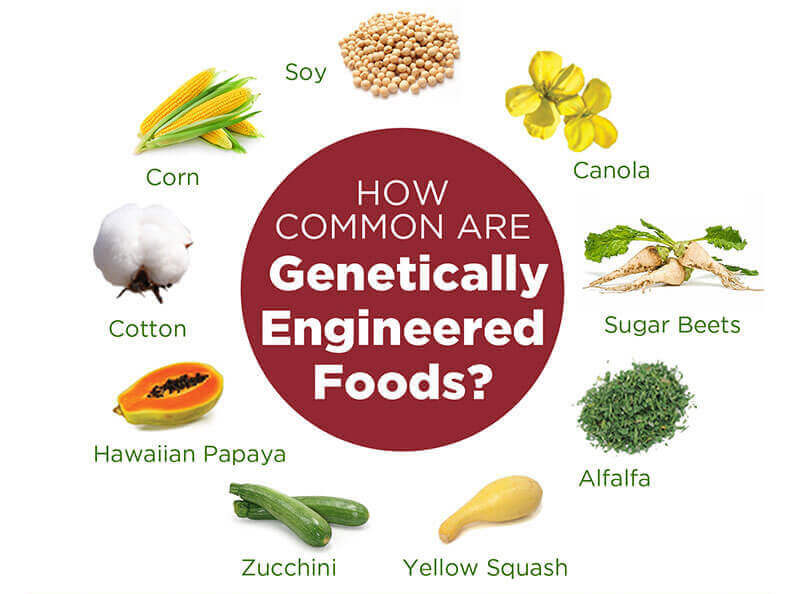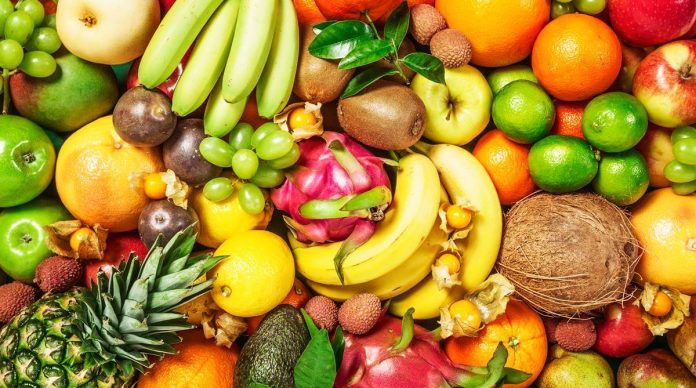What are GMOs and food?
GMOs refer to Genetically Modified Organisms or Genetic Engineered Organisms (this includes plants and animals). GMOs whose genetic material has been altered through genetic engineering techniques.
They are created either by manipulating their own DNA or introducing “foreign” DNA into an organism in order to alter its characteristics. This could be done to achieve desired traits such as improved nutritional content, resistance to pest, or increased tolerance to environmental conditions. Isn’t that a good thing? As a plant biotechnologist, my answer is yes because they play a significant role in addressing food security challenges and improving crop yields. We have commercially available plants that have been created through this method, we have GM Maize, GM soybean, GM cotton.
You may be questioning the use of quotation marks around the term “foreign,”. The DNA being incorporated into a plant may originate from another plant, differing only in species but belonging to the same genus. I will elaborate further by discussing the research we have been conducting over the past few years involving the development of transgenic plants.
“Transgenic” plants mean the transfer of genes from one organism to another (from bacteria, viruses, animals, or even other plants). For example, the Chinese wild cultivar Vitis amurensis is highly tolerant to cold temperatures (it can withstand temperatures as low as minus 40 degrees Celsius (<−40˚ C) whereas the wine grape cultivar Vitis vinifera is highly susceptible to cold temperatures and ends up dying during winter. For this reason, the development of the grapes industry is highly restricted. Both Vitis amurensis and Vitis vinifera belong to the same genus, Vitis, but are different species—amurensis and vinifera, respectively. Genes responsible for cold stress responses in Vitis amurensis are isolated through Polymerase Chain Reaction (PCR) and introduced into Vitis vinifera through genetic engineering. This approach aims to induce cold tolerance in the wine grape cultivar. Besides, these genes are essentially present in the genome of Vitis vinifera but at low expression levels. The goal is to boost the expression levels of the same gene, which may have some nucleotide differences, but encode similar proteins. The intrinsic cold tolerance is enhanced without introducing entirely new genes from other plants or animals/bacteria.

Who are the highest producers of GM crops?
United States is the highest producer of genetically modified crops such as soybeans, corn (maize), cotton, and canola. Brazil significantly produces GM soybeans and corn with the desire to enhance yields and manage agricultural challenges. Argentina is a major producer of GM soybeans, maize, and cotton. Canada adopted biotechnology for the production of GM soybeans, canola, and corn to improve crop performance and manage agricultural pests. India has Bt cotton, which is engineered to express a toxin to protect against certain pests. China produces GM cotton and rice crops to address various agricultural challenges.
In Africa- S. Africa has adopted genetically modified maize, soybeans, and cotton to address agricultural challenges and improve crop yields. Nigeria has varieties of genetically modified cowpeas.
Sudan produces GM cotton. Egypt and Burkina Faso have Bt cotton. Kenya is currently debating and considering genetically modified maize resistant to stem borers, along with the commercialization of biotech crops.

| GMO | BENEFIT/ENHANCEMENT |
| Bt Cotton | Resistance to certain insect pests. |
| Roundup Ready Soybeans | Resistant to the herbicide glyphosate (marketed as Roundup) |
| Golden Rice | Increased levels of beta-carotene (provitamin A) |
| Flavr Savr Tomato | Extended shelf life |
| Innate Potatoes | Reduced bruising and browning, produce lower levels of acrylamide |
| Arctic Apple | Extended shelf life |
| Papaya | Ringspot Virus-Resistant |
| Eggplant (Bt Brinjal) | Resistance to certain insect pests |
Concerns
Environmental Concerns: concerns have been raised that GMOs could cause harm to non-target organisms.
Gene Flow: unintended spread of modified genes to wild relative in the creation of hybrids may lead to unknown ecological consequences.
There have been Human Health Concerns: which include Allergenicity and Toxins where some people have expressed concerns over the potential introduction of allergens or toxins through genetic modification. Long-term Health Effects: there exists distrust about the long-term health effects of consuming genetically modified foods.
Some of the Economic and Societal Issues include Corporate Control: Critics argue that there’s significant control by a few large biotechnology companies over the development and distribution of GMOs, potentially leading to monopolistic practices.
Farmers’ Rights: Concerns on the economic impact on small farmers becoming dependent on purchasing genetically modified seeds from larger corporations.
Labeling and Consumer Choice: some people advocate that consumers have the choice to avoid such products if they wish by mandatory labeling of products containing GMOs.
Ethical Considerations: it has been a concern introducing genetic material from one species into another, crossing species boundaries.
Economic Importance
GMOs have the potential to play significant roles in shaping the future of the world, particularly in agriculture and technology.
Agriculture: Food Security by improving crop yields, enhancing resistance to pests and diseases, and increasing tolerance to environmental conditions.
Nutritional Enhancement: Engineering of GMOs to enhance the nutritional content of crops. This is done to address deficiencies in essential nutrients and improving the overall quality of the food supply.
Way forward •••
Regulation and Governance: To ensure the responsible development and deployment of GMOs, proper regulation and governance are essential. Safety, ethical standards, and transparency are some of the critical areas that regulatory frameworks need to address.
Public Perception: For widespread adoption of technology, public acceptance and perception are crucial factors. Clear communication, education, and transparency about the benefits and risks are important for building public trust.
Global Collaboration: International collaboration is important to address global challenges as GMO technologies surpass national borders.
Susan Randi Wessler, Ph.D., distinguished professor of Genetics, University of California, Riverside, and home secretary of the International Academy of Sciences approves that “GMOs are extremely safe for consumption”. After a long period of GMO use, there have been no reports of toxicity.
As a scientist, I am of the opinion that, with effective regulation and oversight, along with raising public awareness and nourishing positive and favorable public attitudes toward GMOs, these technologies can play a crucial role in addressing the challenges associated with a growing population and climate change.
On the other hand, CRISPR (Clustered Regularly Interspaced Short Palindromic Repeats) is a powerful gene-editing tool that allows precise modification of specific genes within an organism’s own genome. Editing of plants using CRISPR involves altering or modifying existing genes in the plant’s DNA rather than introducing genes from other species. As such, CRISPR-edited plants fall under the broader category of GMOs but may not be classified as transgenic because they do not necessarily involve the introduction of foreign genes.
In summary, CRISPR-edited plants are a form of GMO, but their genetic modifications are achieved through gene editing within the organism’s own genome, making them distinct from transgenic organisms where genes from other species are introduced.




